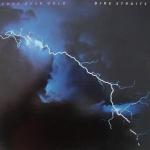More of the Music of Hall and Oates
One of our good customers had this to say about some Hot Stampers he purchased recently:
Hey Tom,
I want to thank you once again.
Quite a few years ago now I contacted you and talked about this concept called “Hot Stampers.” It ended up both saving me a lot of misdirection and foolishly trying to rebuild my vinyl collection with new vinyl re-releases often called “audiophile” and “half-speed” issues.
 After a few confirmations of what you said, I quickly sold all those copies and began building a real world class collection of vinyl “original” Hot Stamper level records. A good number came from your business and I also made a hobby of trying to do what you do in finding “Hot Stampers.”
After a few confirmations of what you said, I quickly sold all those copies and began building a real world class collection of vinyl “original” Hot Stamper level records. A good number came from your business and I also made a hobby of trying to do what you do in finding “Hot Stampers.”
Fortunately Philadelphia has a reasonable number of used record stores but unfortunately, as you well know, this is a rigorous and costly endeavor, but it can be rewarding at times and at other times requires that I rely on you.
So today I’m snowed in here and I fired up the rig and decided to do some small scale shootouts and find the true great copies from my already culled collection. Put on several Hall and Oates and focused on “She’s Gone”. One was just clearly dynamic, clear and present. Then I put on several Dire Straits “Love Over Gold” and ended up with 3 killer copies (such a good LP).
I then put on about 5 copies of Phil Collins “Face Value” with “If Leaving Me is Hard”. What a great love song, and narrowed it to 2.
 Yes my rig is really awesome for close up intimate listening at any level. It is something I have worked on for decades to become resolving, dynamic, harmonic, dimensional transparent, and involving. I can listen loud and close without distortion. When I suddenly find that “Hot Stamper” Phil Collins is in the room where I hear his voice articulate and rich with background singers just as good and the band perfectly balanced to his vocal.
Yes my rig is really awesome for close up intimate listening at any level. It is something I have worked on for decades to become resolving, dynamic, harmonic, dimensional transparent, and involving. I can listen loud and close without distortion. When I suddenly find that “Hot Stamper” Phil Collins is in the room where I hear his voice articulate and rich with background singers just as good and the band perfectly balanced to his vocal.
And it is then I think of your contribution to all of this and want to tell you. So that is what I am doing. I know what three stars means. I can’t afford many of them as I would assume some wealthy customers can but I really appreciate them and their unfortunate rarity and I appreciate all the work you have done to make this possible.
Ed
Ed,
We love it when our customers take the time and make the effort to do their own shootouts.
And swearing off the Modern Heavy Vinyl pressing is surely one of the clearest signs of progress any audiophile can see for himself.
Further Reading



 More of the Music of Hall and Oates
More of the Music of Hall and Oates

